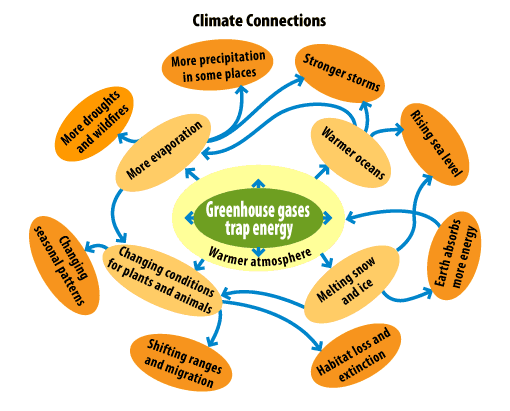Climate Concepts
Climate is what we expect, weather is what we get. – Mark Twain
Climate refers to the average weather conditions in a certain place over many years. For example, the climate in Minnesota is cold and snowy in the winter, and the climate in Honolulu, Hawaii, is warm and humid all year long. The climate in one area, like the Midwest or Hawaii, is called a regional climate. The average climate around the world is called global climate.
When scientists talk about global climate change, they're talking about the global climate and a pattern of change that's happening over many years. One of the most important trends that scientists look at is the average temperature of the Earth, which has been increasing for many years. This is called global warming.
Rising global temperatures lead to other changes around the world, such as stronger hurricanes, melting glaciers, and the loss of wildlife habitats. That's because the Earth's air, water, and land are all related to one another and to the climate. This means a change in one place can lead to other changes somewhere else. For example, when air temperatures rise, the oceans absorb more heat from the atmosphere and become warmer. Warmer oceans, in turn, can cause stronger storms.

This diagram shows how global warming can lead to a variety of other changes.
Climate Challenge!
- Imagine that last summer was much hotter than usual where you live. Is this a sign of climate change? Yes or no? Reveal answer
No. The weather naturally varies from year to year, and some years are hotter than others.
- Imagine that almost every summer for the past decade has been hotter than usual. Is this a sign of climate change? Yes or no? Reveal answer
Yes. Climate change occurs over many years, so a pattern of many hotter summers could be a sign of climate change. This is especially true if the same pattern is happening in many places around the world.
